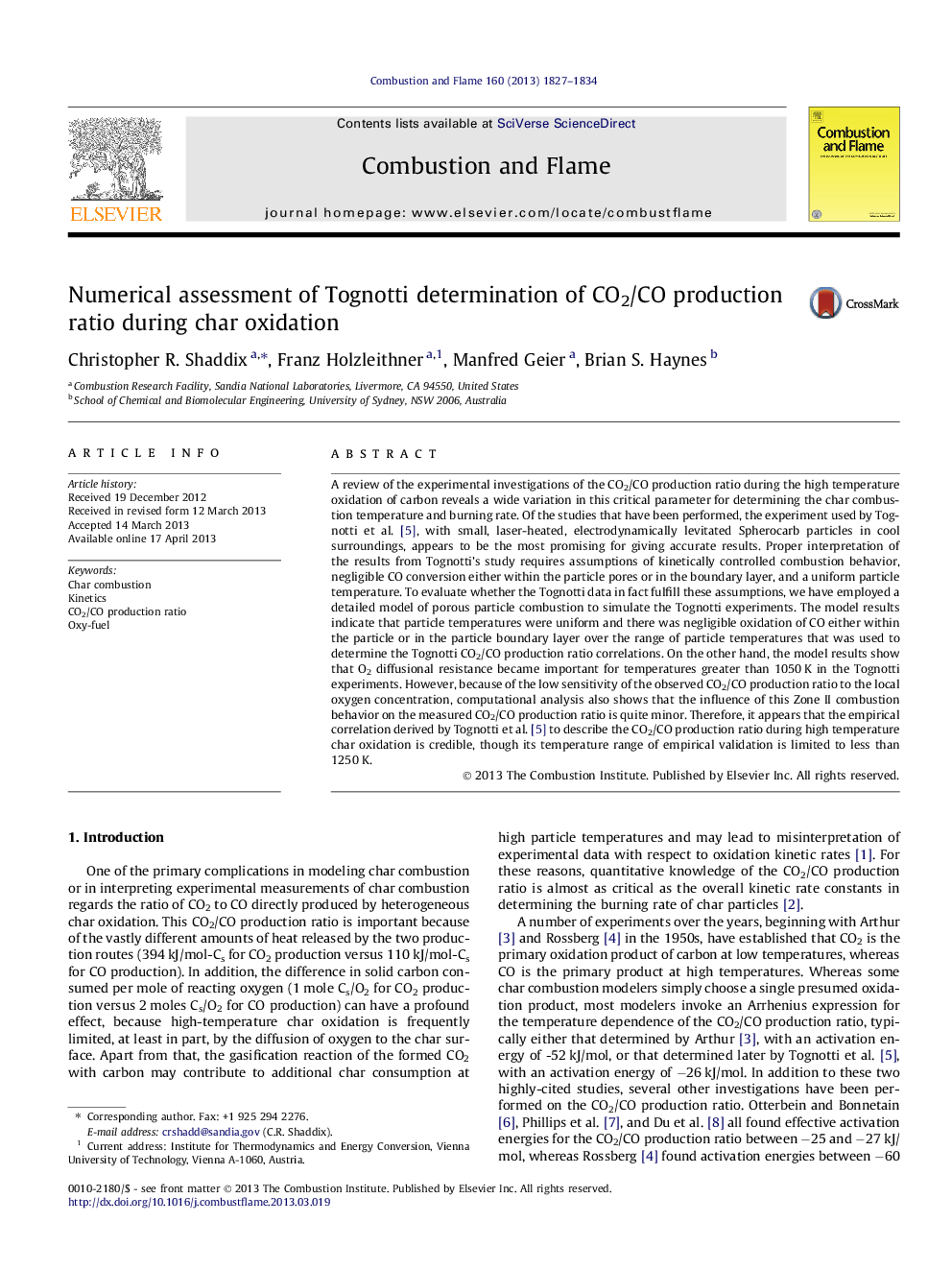| Article ID | Journal | Published Year | Pages | File Type |
|---|---|---|---|---|
| 166955 | Combustion and Flame | 2013 | 8 Pages |
A review of the experimental investigations of the CO2/CO production ratio during the high temperature oxidation of carbon reveals a wide variation in this critical parameter for determining the char combustion temperature and burning rate. Of the studies that have been performed, the experiment used by Tognotti et al. [5], with small, laser-heated, electrodynamically levitated Spherocarb particles in cool surroundings, appears to be the most promising for giving accurate results. Proper interpretation of the results from Tognotti’s study requires assumptions of kinetically controlled combustion behavior, negligible CO conversion either within the particle pores or in the boundary layer, and a uniform particle temperature. To evaluate whether the Tognotti data in fact fulfill these assumptions, we have employed a detailed model of porous particle combustion to simulate the Tognotti experiments. The model results indicate that particle temperatures were uniform and there was negligible oxidation of CO either within the particle or in the particle boundary layer over the range of particle temperatures that was used to determine the Tognotti CO2/CO production ratio correlations. On the other hand, the model results show that O2 diffusional resistance became important for temperatures greater than 1050 K in the Tognotti experiments. However, because of the low sensitivity of the observed CO2/CO production ratio to the local oxygen concentration, computational analysis also shows that the influence of this Zone II combustion behavior on the measured CO2/CO production ratio is quite minor. Therefore, it appears that the empirical correlation derived by Tognotti et al. [5] to describe the CO2/CO production ratio during high temperature char oxidation is credible, though its temperature range of empirical validation is limited to less than 1250 K.
